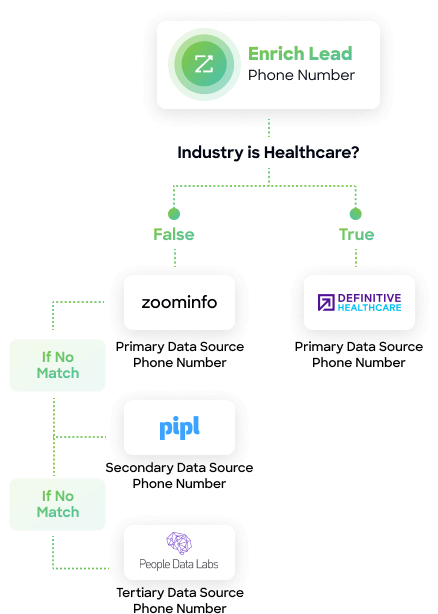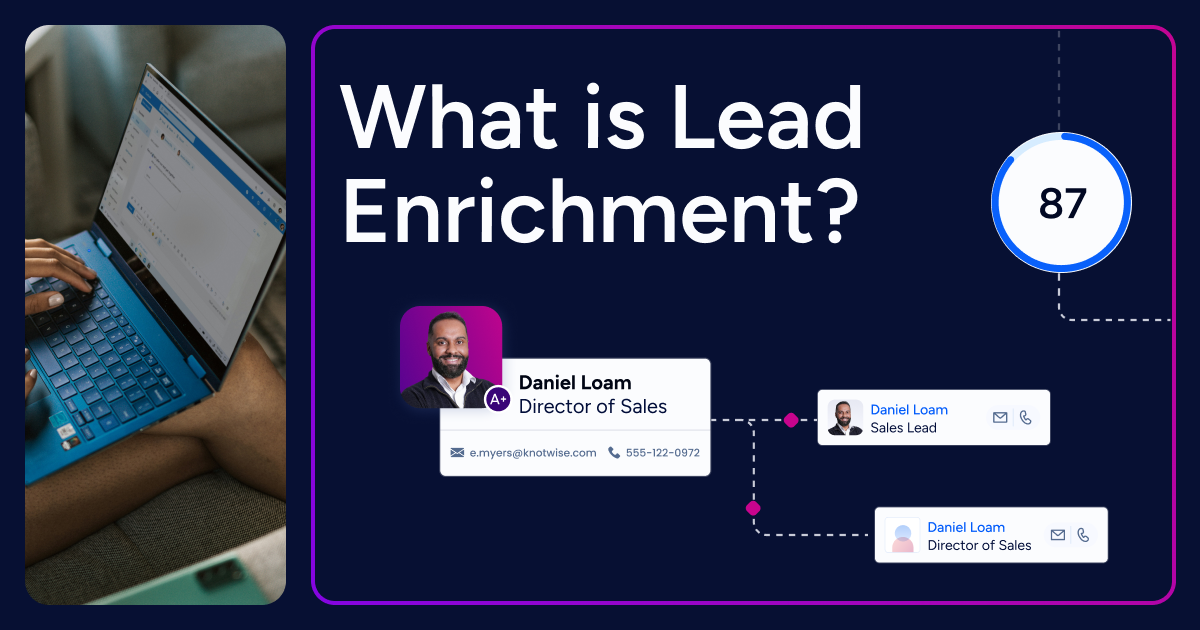Thousands of new ventures are launched every day, and others close their doors for good. Businesses rebrand or merge. Leadership changes weekly, and loyal brand champions move onto other opportunities daily.
Now think about the leads your business needs to grow. Do they reflect this constant state of flux, or are they a snapshot of the market that no longer exists?
Lead enrichment is crucial to sales-driven businesses in every sector and vertical. While many companies have at least some form of lead enrichment in place, the quality of the data behind those processes can mean the difference between success and failure.
Here’s how to get lead enrichment right so your business can go to market effectively.
What Is Lead Enrichment?
Lead enrichment is the process of adding data to business leads. This typically involves supplementing a lead’s basic information, such as the prospect’s name and email address, with valuable insights such as phone number, company size, job title, purchasing behavior, industry, geographic location, and even recent intent signals.
Properly enriched leads don’t just give sellers more information on who their prospects are. Lead enrichment allows GTM teams to identify and better understand prospects’ pain points and address those problems as part of their outreach, communicating potential value to prospects from the very first interaction.
Instead of relying solely on the limited details provided by a form submission or LinkedIn scrape, enriched leads create a more complete picture of a person or company.
The improved clarity gained from lead enrichment done right lets businesses segment their audiences more accurately, tailor outreach, and prioritize leads more effectively.
Why Lead Enrichment Matters for B2B Businesses
Recent years have seen a profound shift in the balance of power between buyers and sellers — in favor of buyers.
Today’s buyers are better informed than they’ve ever been. According to some estimates, many are two-thirds of the way along the conventional purchasing journey before they even consider engaging with sellers. This means that, when buyers do reach out, it’s critical for salespeople to successfully capitalize on those opportunities. Every potential deal matters.
Similarly, marketers are under more pressure than ever to deliver more, higher-quality leads. With every marketing dollar under scrutiny, it’s crucial for marketers to deliver the right message, to the right audience, at the right time, every time.
The stakes are simply too high for frontline GTM teams to rely on bad data and poor-quality leads. Today’s buyers expect more. With no shortage of vendors for buyers to choose from, it’s vital that sales and marketing teams work with reliable, actionable leads, and ensure those leads are routed effectively to the sellers with the greatest chance of closing the deal.
The Business Benefits of Lead Enrichment
Enriching leads has many benefits that revenue operators and frontline sales and marketing teams benefit from:
Reduced bounce rates due to incorrect email addresses
Improved connect rates and increased quantity of meaningful
conversations using accurate direct dials and email addresses
Decreased time-to-action with better lead scoring and faster lead routing
Improved segmentation and lead nurture
There are several secondary benefits to lead enrichment. Businesses with robust enrichment processes protect their brand reputation and avoid wasted time and effort by relying on current, accurate email addresses and contact data.
In addition, many enrichment services offer sophisticated automations that eliminate the need for manual, time-consuming tasks such as cleansing and deduplication, freeing up precious time for sellers to actually engage with prospects and demonstrate genuine value.
How Does Lead Enrichment Work?
Enriching leads is the process of contextualizing first-party data, such as information submitted via webforms and existing data from your CRM or marketing automation platform, with third-party data from external providers.
Enrichment often relies on rule-based waterfall logic to determine the accuracy of information. Incoming data is evaluated on a per-field basis, including firmographics such as industry, and subsequent fields are then examined to determine their validity, such as phone number, email, and primary website domain, for example.

Even large, well-established enterprise companies only have so much visibility into their customers and prospects, which is why reliable, accurate third-party data is critical to quality lead enrichment processes.
Functionally, lead enrichment relies on integrating multiple data sources with their primary systems of record. This is often done via API, but many businesses connect third-party data sources to their data warehouses. These integrations enable revenue teams to not only ensure the accuracy of data in their systems, but discover new information connected to existing or incoming data.
The extent of these integrations varies depending on a business’ enrichment needs. Smaller ventures such as startups may have less demanding enrichment requirements and might focus primarily on contact data. For large enterprises that span multiple industry verticals, significantly more information may be required, necessitating more data sources.
Lead Enrichment and Intent Data
Beyond demographic and firmographic enrichment, many forward-thinking B2B teams are now incorporating intent data as part of their lead enrichment process. Lead enrichment using intent data doesn’t just provide frontline sales teams with more context — it allows them to identify the behaviors exhibited by their most promising leads and best-fit accounts, and prioritize engaging those leads.
Intent data provides an even greater level of contextualization to inbound leads, such as a contact’s previous engagements with your business such as content downloads or webinar attendance, previous outreach efforts and their outcomes, and information such as their business’ recent financial performance, relevant executive moves, and hiring trends.
Enriching leads with intent data is becoming increasingly desirable due to intensifying competition and demands being placed on sales and marketing teams. The additional visibility and context offered by enriching leads with intent data, such as that offered by ZoomInfo’s Go-to-Market Intelligence Platform, gives revenue teams a critical competitive edge over companies relying on user-submitted data.
Lead Enrichment: An Integral Part of Broader Data Hygiene
Many businesses see lead enrichment not as a one-time process, but as part of broader CRM hygiene workflows.
Enrichment doesn’t just give your frontline revenue teams greater insight and context into potential leads. It can — and should — feed into larger CRM data hygiene initiatives that ensure continuity and accuracy of data across your company, regardless of which departments are actively relying on it.
Clean, enriched lead data can and should inform other areas of a business as part of a holistic approach to data accuracy.
Lead Enrichment Is No Longer Optional
Working with incomplete data is as costly as it is inefficient. In today’s markets, there is simply no room for error, and it’s vital that revenue teams have the most accurate information possible.
Clean, enriched, actionable data is the fuel that powers modern marketing and sales engines. From more accurate targeting to better-qualified leads and faster deal cycles, data enrichment transforms guesswork into strategic growth.
Learn more about how ZoomInfo can help your business grow with lead and data enrichment services.


